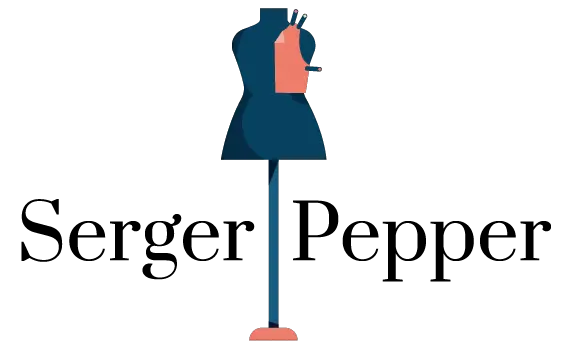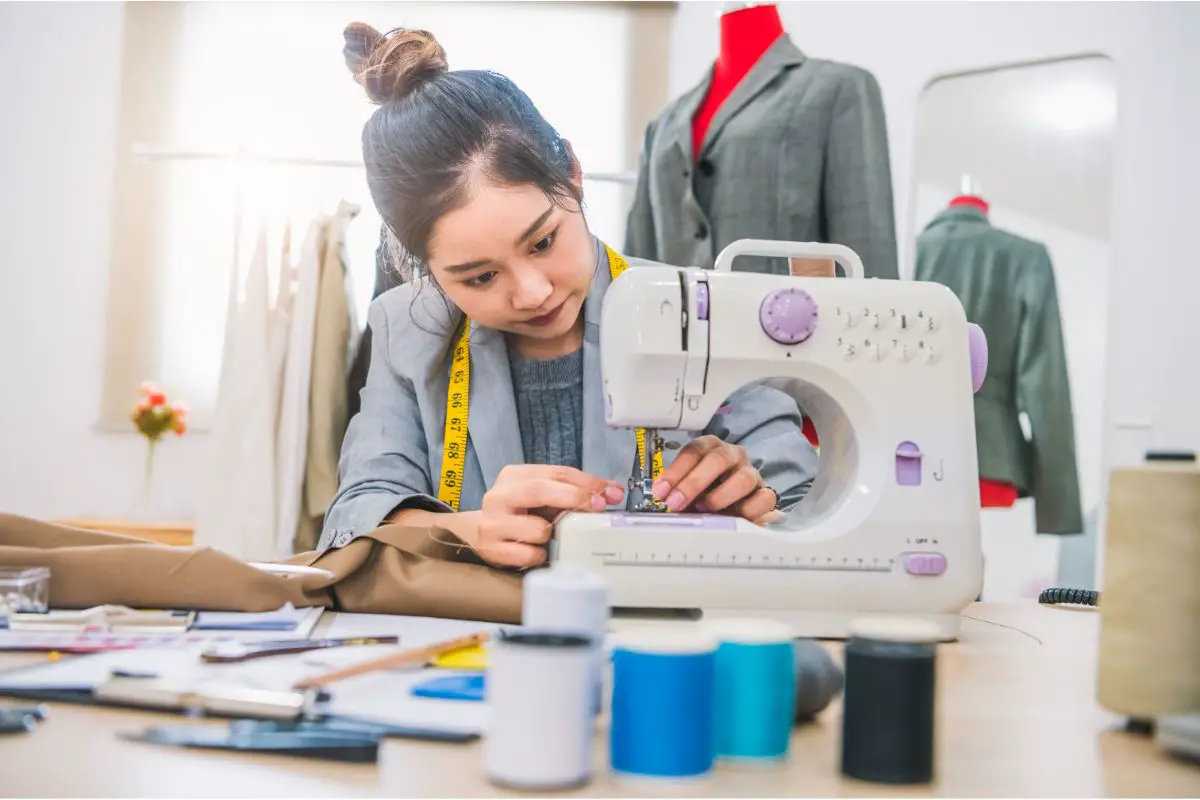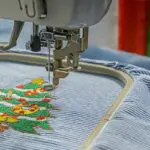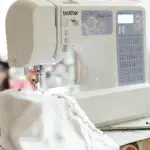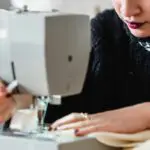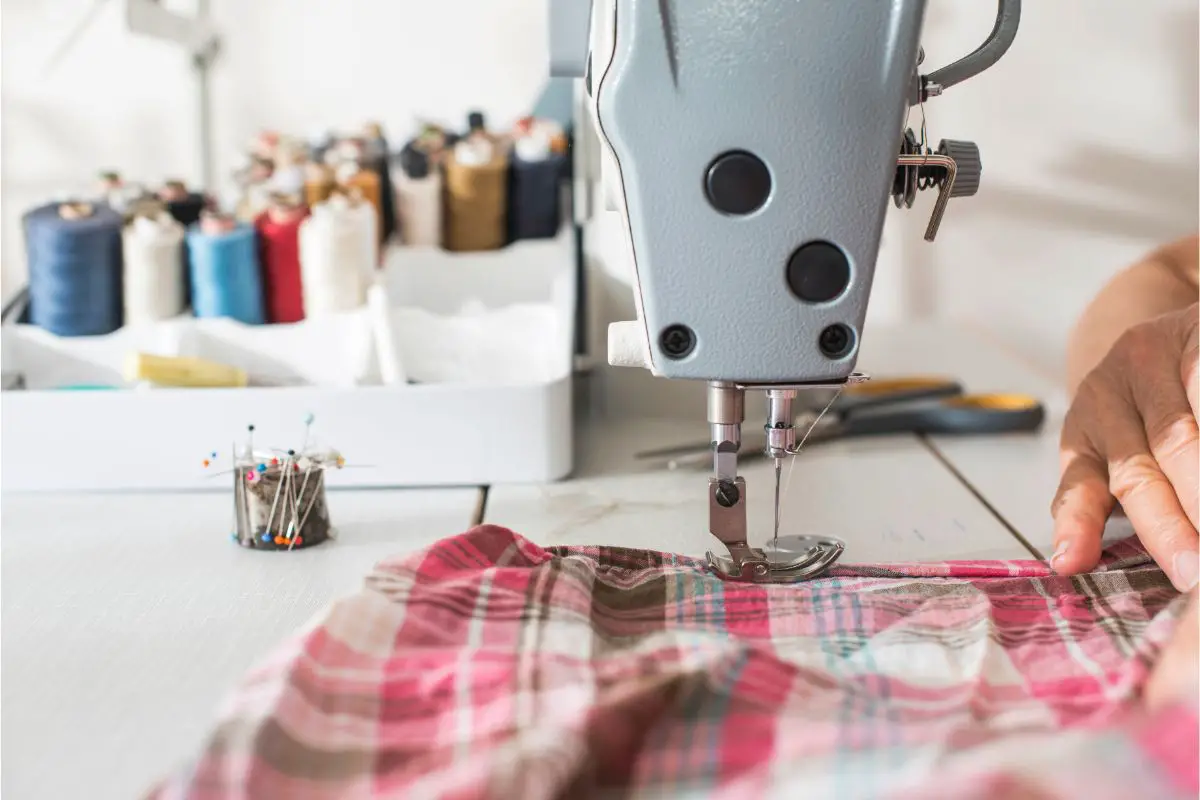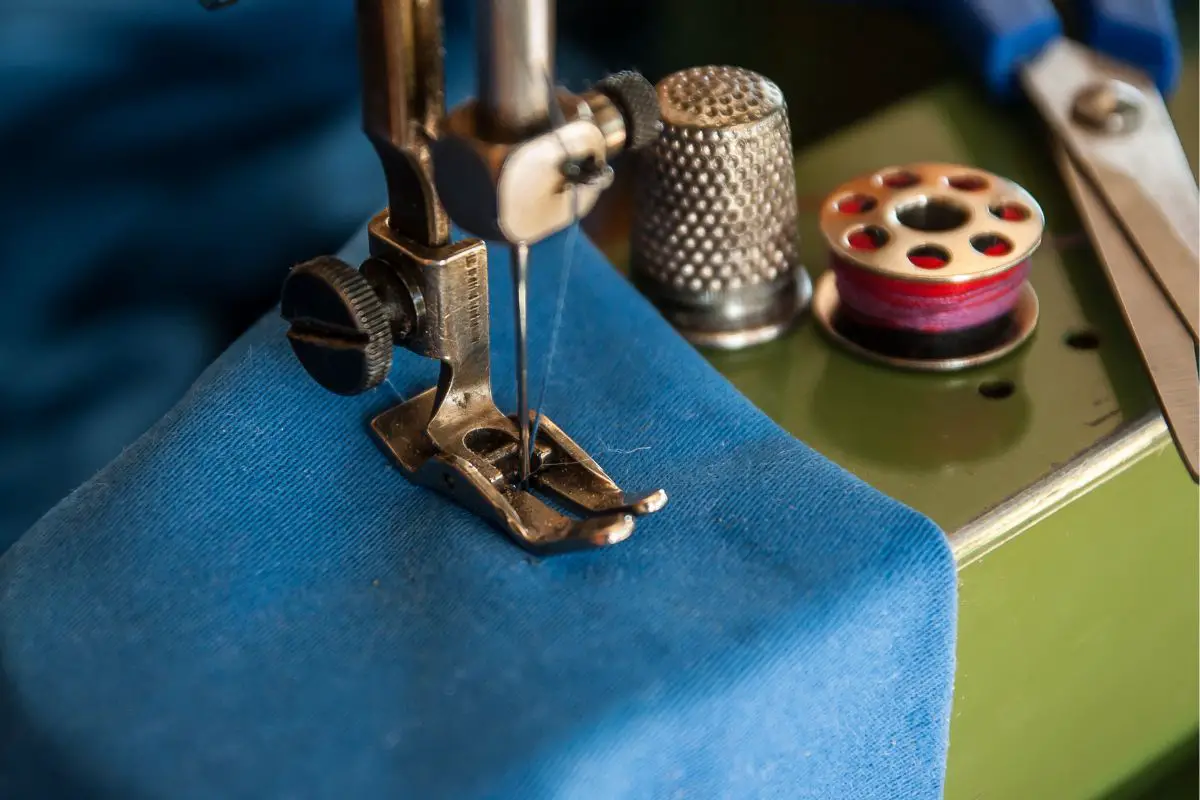A whipstitch is a classic sewing technique that is still widely used today – and its popularity is largely due to its simplicity and versatility.
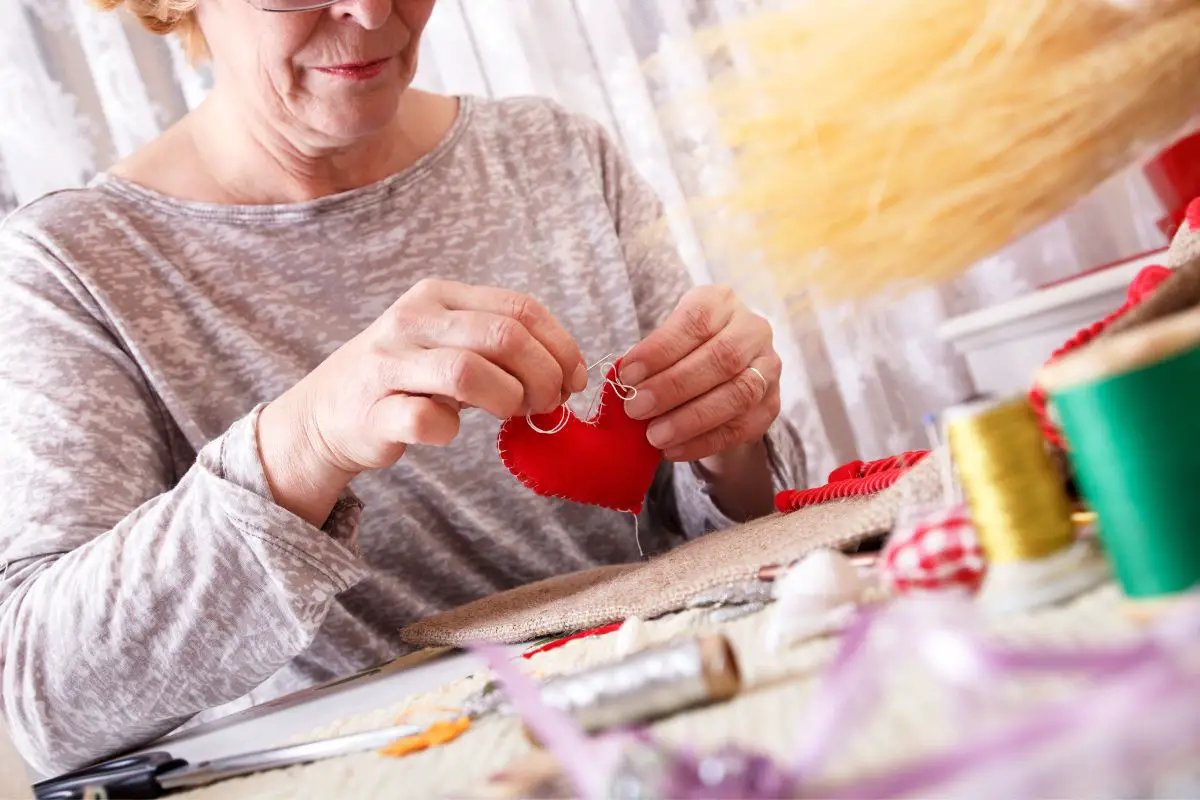
A whipstitch is a type of stitch used in both hand sewing and machine sewing projects, and the stitch gets its name from the way that it resembles the motion of a whip as it is sewn.
We took a closer look at the whip stitch, including how it’s done, what fabrics it works best with, and when to choose a whip stitch over other types of stitches.
A whipstitch is a type of stitch used in sewing and craft projects. It gets its name from the way that it looks like the motion of a whip as it is sewn.
The stitches are typically small, making them ideal for seams that don’t need to be strong but still require neatness and accuracy.
How To Do A Whipstitch
A whipstitch can be done by hand or machine. To do the stitch by hand, thread a needle with a long piece of yarn, thread it through the seam allowance, and take one small stitch at a time.
With each stitch, loop the needle over the fabric and pull it tight to get a neat look.
When To Use A Whipstitch
There are a number of situations in which a whipstitch may be useful, and these include:
Lightweight Fabrics
A whipstitch is ideal for lightweight fabrics such as chiffon and silk because it’s a very delicate stitch that won’t damage the fabric. It’s also great for sewing hems on garments with lightweight fabrics, as the stitch won’t be too bulky.
Finishing Seams
A whipstitch is often used to finish seams on projects like quilts and pillowcases. This is because the stitch is neat and small, making it perfect for creating a neat edge on any fabric.
Attaching Appliques And Embellishments
A whipstitch can also be used to attach appliques and other embellishments onto fabric or garments. The stitch is strong enough to hold the applique in place securely, but delicate enough that it won’t damage the fabric.
Basting
Whip Stitches are often used in basting, which is a temporary stitch used to hold two layers of fabric together before they are permanently stitched.
The whipstitch is ideal for this task as it’s quick and easy to sew and can be easily removed without damaging the fabric when the project is complete.
Reinforcing Seams
In addition to finishing seams, this stitch can also be used to reinforce them. This is especially useful for garments that will be worn frequently, as the whipstitch will provide additional strength and stability to the seams.
Turning Corners
A whipstitch is also great for turning corners when sewing, as the small stitches make it easier to make neat and precise turns. This is especially useful for garments or other projects with curved or intricate edges, such as bags and quilts.
What Are The Benefits Of Whip Stitch?
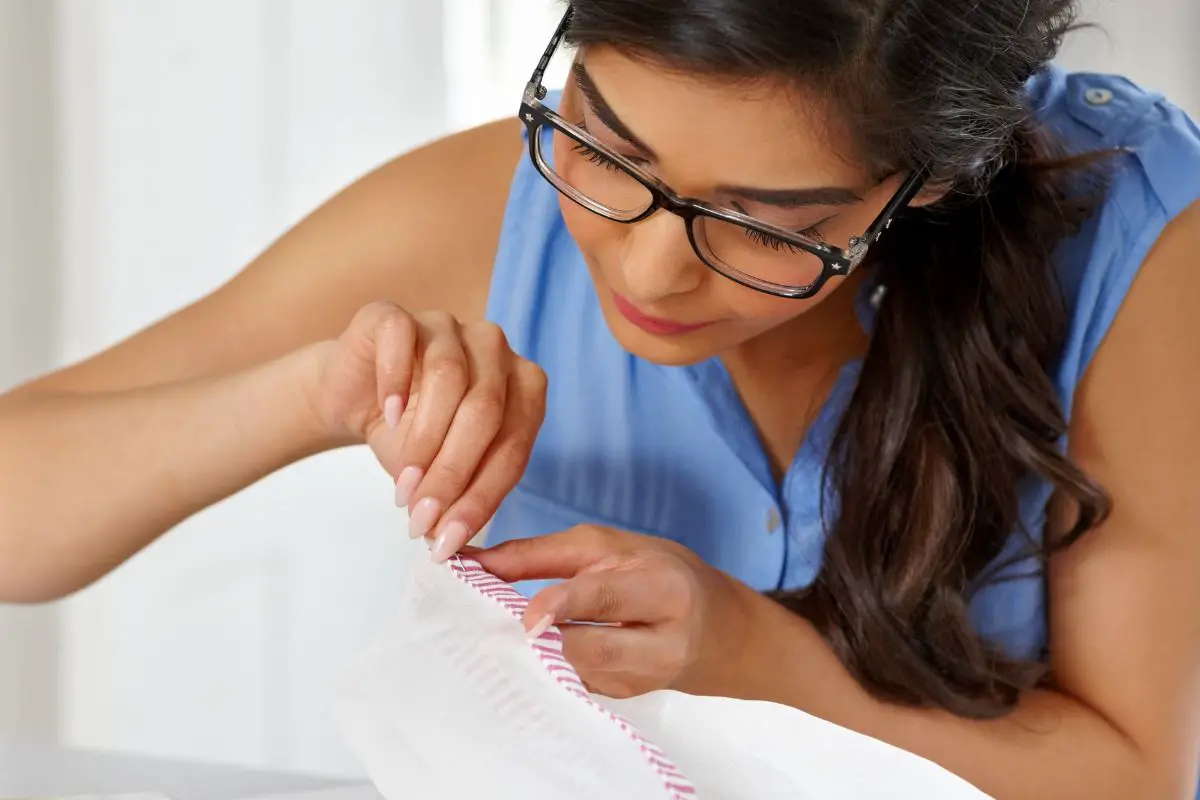
As we have seen, whipstitch is versatile and can be used in a number of projects. Some of the main benefits include:
Speed And Ease
One of the main advantages of a whipstitch is that it’s quick and easy to do. Even if you’re not an experienced seamstress, you should be able to master this stitch with a bit of practice.
Also, since the stitches are small and neat, it’s easy to sew without making mistakes or having to undo any stitches.
Versatility
As we have seen, a whipstitch is also very versatile and can be used for a range of fabrics and projects. It’s strong enough to reinforce seams, yet delicate enough that it won’t damage lightweight or fragile fabrics.
Strength
A whipstitch is also surprisingly strong, as the stitches are small and tight. This makes it a great choice for basting and reinforcing seams on projects that will receive lots of wear.
How To Create A Perfect Whipstitch
Now that we have taken a look at the benefits and uses of whipstitch, it is time to consider how we can make the stitch the best it can be. Some top tips include:
Follow Instructions
Following instructions is key to successfully achieving a neat and professional-looking finish with a whipstitch.
Whether you’re working by hand or machine, it’s important to read the instructions that come with your sewing pattern or project carefully, as this will ensure that you sew the stitch properly and get the desired result.
Take Your Time
Although a whipstitch is quick and easy to do, it’s also important to take your time when sewing. This will ensure that you make even and consistent stitches, which will create a neat finish.
Practice Makes Perfect
Practicing the whipstitch is also key to perfecting the technique. If you’re a beginner, it’s worth investing in some practice fabric so that you can perfect the stitch before starting your project.
Use The Right Thread And Fabric
Another key to achieving a neat whipstitch is to make sure that you use the right thread and fabric. For instance, if you’re working with lightweight or delicate fabrics, it’s important to use a finer thread as this will help to avoid damaging the fabric.
Similarly, when working with heavier fabrics, a thicker thread is often better as this will provide extra strength and stability.
Final Thoughts
The whipstitch is an essential stitch for any seamstress, as it can be used for a range of tasks such as reinforcing seams, basting, and turning corners.
Although it’s quick and easy to do, it’s important to take your time when sewing this stitch and ensure you use the right thread and fabric.
With some practice and the right materials, you should be able to perfect the whipstitch and achieve a professional-looking finish, ensuring that you have the skills you need to take your projects to the next level.
- How To Sew Fabrics Together - June 5, 2023
- How Many Stitches Per Inch? - June 5, 2023
- How Long Does It Take To Sew A Dress? - June 5, 2023
